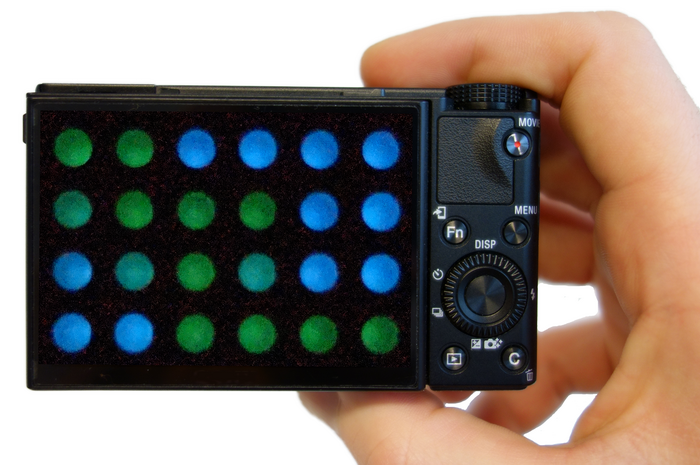Despite recent advancements, many highly sensitive diagnostic tests for viral diseases still require complicated techniques to prepare a sample or interpret a result, making them impractical for point-of-care settings or areas with few resources. But now, a team reporting in ACS Central Science has developed a sensitive method that analyzes viral nucleic acids in as little as 20 minutes and can be completed in one step with “glow-in-the-dark” proteins.

Credit: Maarten Merkx
Despite recent advancements, many highly sensitive diagnostic tests for viral diseases still require complicated techniques to prepare a sample or interpret a result, making them impractical for point-of-care settings or areas with few resources. But now, a team reporting in ACS Central Science has developed a sensitive method that analyzes viral nucleic acids in as little as 20 minutes and can be completed in one step with “glow-in-the-dark” proteins.
The firefly’s flash, the anglerfish’s glowing lure and the ghostly blue of phytoplankton-covered beaches are all powered by the same scientific phenomenon known as bioluminescence. A chemical reaction involving the luciferase protein causes the luminescent, glow-in-the-dark effect. The luciferase protein has been incorporated into sensors that emit an easily observed light when they find their target. This simplicity makes these types of sensors ideal for point-of-care testing, but so far, they’ve lacked the incredibly high sensitivity required of a clinical diagnostic test. The gene-editing technique known as CRISPR could provide this ability, but it requires many steps and additional specialized equipment to detect what can be a low signal in a complex, noisy sample. So, Maarten Merkx and colleagues wanted to use CRISPR-related proteins, but combine them with a bioluminescence technique whose signal could be detected with just a digital camera.
To make sure there was enough sample RNA or DNA to analyze, the researchers performed recombinase polymerase amplification (RPA), a simple method that works at a constant temperature of about 100 F. With the new technique, called LUNAS (luminescent nucleic acid sensor), two CRISPR/Cas9 proteins specific for different neighboring parts of a viral genome each have a distinct fragment of luciferase attached to them. If a specific viral genome that the researchers were testing for was present, the two CRISPR/Cas9 proteins would bind to the targeted nucleic acid sequences and come close to each other, allowing the complete luciferase protein to form and shine blue light in the presence of a chemical substrate. To account for this substrate being used up, the researchers used a control reaction that shined green. A tube that changed from green to blue indicated a positive result.
When tested on clinical samples collected from nasal swabs, RPA-LUNAS successfully detected SARS-CoV-2 RNA within 20 minutes, even at concentrations as low as 200 copies per microliter. The researchers say that the LUNAS assay has great potential for detecting many other viruses effectively and easily.
The authors acknowledge funding from the Dutch Research Council | Nationaal Regieorgaan Praktijkgericht Onderzoek SIA (NRPO-SIA) and the Eindhoven University Fund.
The paper’s abstract will be available on Mar. 15 at 8 a.m. Eastern time here: http://pubs.acs.org/doi/abs/10.1021/acscentsci.2c01467
For more of the latest research news, register for our upcoming meeting, ACS Spring 2023. Journalists and public information officers are encouraged to apply for complimentary press registration by completing this form.
The American Chemical Society (ACS) is a nonprofit organization chartered by the U.S. Congress. ACS’ mission is to advance the broader chemistry enterprise and its practitioners for the benefit of Earth and all its people. The Society is a global leader in promoting excellence in science education and providing access to chemistry-related information and research through its multiple research solutions, peer-reviewed journals, scientific conferences, eBooks and weekly news periodical Chemical & Engineering News. ACS journals are among the most cited, most trusted and most read within the scientific literature; however, ACS itself does not conduct chemical research. As a leader in scientific information solutions, its CAS division partners with global innovators to accelerate breakthroughs by curating, connecting and analyzing the world’s scientific knowledge. ACS’ main offices are in Washington, D.C., and Columbus, Ohio.
To automatically receive news releases from the American Chemical Society, contact [email protected].
Follow us: Twitter | Facebook | LinkedIn | Instagram
Journal
ACS Central Science
DOI
10.1021/acscentsci.2c01467
Article Title
Glow-in-the-Dark Infectious Disease Diagnostics Using CRISPR-Cas9-Based Split Luciferase Complementation
Article Publication Date
15-Mar-2023




